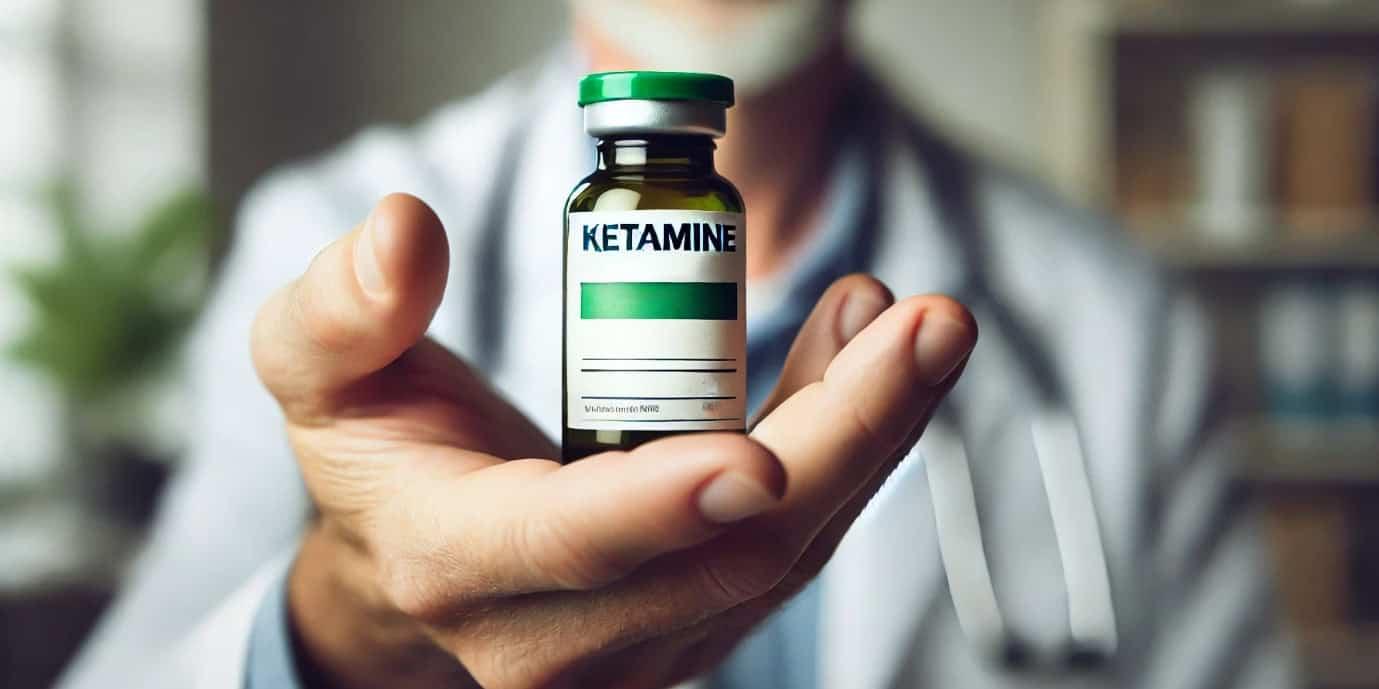Blog
Ketamine for depression

In the realm of mental health treatment, the search for effective solutions to combat depression has often led patients and clinicians alike down intricate paths filled with trials, tribulations, and sometimes, dead ends. However, a growing body of research has begun to spotlight ketamine—a substance historically known for its anesthetic properties and more recently, its off-label use in psychiatry—as a beacon of hope for those grappling with this pervasive condition. With depression affecting millions worldwide, the emergence of ketamine as a potential therapeutic agent prompts important questions: Can this unconventional treatment offer relief where traditional methods have faltered? What mechanisms underlie its rapid effects? As we delve deeper into the science and stories surrounding ketamine, we uncover not just its promise but also the complexities it brings to the ever-evolving landscape of mental health care. Join us as we explore the multifaceted role of ketamine in the ongoing battle against depression, examining both its potential benefits and the cautionary notes that accompany its use.
Exploring the Mechanisms of Ketamine in Alleviating Depression Symptoms
The intriguing mechanisms through which ketamine exerts its antidepressant effects are still being elucidated, but several key pathways have emerged in recent research. Unlike standard antidepressants that typically take weeks to show potential benefits, ketamine can produce rapid improvement in mood, often within hours. This swift action may be attributed to its ability to modulate the glutamatergic system, enhancing synaptic plasticity and promoting neurogenesis. By antagonizing the N-methyl-D-aspartate (NMDA) receptors and facilitating the activation of AMPA receptors, ketamine seems to foster an environment conducive to increased communication between neurons, leading to improved mood and emotional regulation.
Furthermore, ketamine’s impact on mobile signaling pathways adds another layer of complexity to its therapeutic potential. Research indicates that ketamine may initiate the release of certain brain-derived neurotrophic factors (BDNF), which play a crucial role in enhancing neuronal survival and function. This cascade of biochemical events can lead to enhanced connectivity in the brain’s mood-regulating circuits. A deeper understanding of these processes is essential for developing new treatments and ensuring that ketamine remains a viable option for those struggling with depression. Key points include:
- Rapid action: Improvement often seen within hours.
- Glutamate modulation: Influences neuronal communication.
- BDNF release: Supports neuron health and mood regulation.
Clinical Applications and Efficacy of Ketamine as a Rapid Antidepressant
Recent studies have demonstrated that ketamine can serve as a rapid antidepressant, often providing relief within hours rather than weeks, as seen with traditional antidepressants. This speed of action is particularly crucial for patients with severe depression and suicidal ideation, where timely intervention can be life-saving. The use of ketamine in clinical settings has expanded due to its unique mechanism of action, primarily working on glutamate pathways, which differs significantly from conventional treatments that typically target serotonin and norepinephrine. As a result, ketamine therapy has been embraced in various forms, including intravenous administration and intranasal delivery, showcasing its versatility.
The efficacy of ketamine is further supported by a growing body of clinical evidence indicating positive outcomes in treatment-resistant depression. Patients often report a significant decrease in depressive symptoms following a single treatment session. Key advantages include:
- Rapid onset of action – Relief from depressive symptoms can occur in as little as 24 hours.
- Fewer side effects compared to traditional antidepressants.
- Flexibility in administration options like IV, IM, and nasal spray.
To illustrate the comparative outcomes based on existing research, the following table summarizes the results from multiple clinical trials:
| Treatment Method | Average Onset of Relief | Duration of Effect |
|---|---|---|
| Intravenous Ketamine | 2-4 hours | 1-2 weeks |
| Intranasal Ketamine | 1-2 hours | 1 week |
| Oral Ketamine | 3-4 hours | 1 week |
These findings underscore not only the potential for ketamine as a rapid intervention but also its capability to serve as a lifeline for patients navigating the challenges of depression.
Navigating the Treatment Landscape: Ketamines Role in Mental Health Care
The evolving mental health landscape has seen the introduction of various innovative treatment modalities, with ketamine emerging as a standout option for those struggling with depression. Traditional antidepressants often take weeks to show effects, causing frustration and prolonged suffering for many. In contrast, ketamine provides rapid relief, acting on the brain’s glutamate system rather than the typical serotonin or norepinephrine pathways. This shift not only highlights its unique biochemical capabilities but also raises intriguing questions about its potential as a game-changer in mental health care.
Understanding ketamine’s role goes beyond its immediate effects. Many patients report enhanced mood and a newfound sense of hope following treatment, making it a vital component in comprehensive care strategies. It is crucial to emphasize that ketamine treatment should be part of a multifaceted approach to mental health. When considering this therapy, patients and practitioners should weigh factors such as:
- Individual response: Each person’s reaction to ketamine can vary.
- Frequency of administration: The treatment schedule may differ based on individual needs.
- Potential side effects: Awareness of transient dissociative symptoms can aid in informed decision-making.
| Aspect | Details |
|---|---|
| Administration Routes | IV, IM, nasal spray |
| Effect Onset | Minutes to hours |
| Duration of Effects | Days to weeks |
Guidelines for Patients Considering Ketamine Therapy for Depression
Considering ketamine therapy for depression is a significant decision that requires careful thought and consultation with healthcare professionals. Before embarking on this treatment journey, it’s essential to gather all relevant information and assess personal circumstances thoroughly. Here are some key factors to consider:
- Medical Evaluation: Ensure a comprehensive assessment by a qualified mental health provider to determine if ketamine therapy is appropriate for your specific condition.
- Informed Consent: Understand the risks, benefits, and potential side effects associated with ketamine therapy. Don’t hesitate to ask your provider any questions you may have.
- Establish a Support System: Engage with family or friends who can provide emotional support throughout the treatment process, as it can elicit mixed feelings.
- Monitor Progress: Regular follow-up appointments should be scheduled to assess the effectiveness of the treatment and make any necessary adjustments.
It’s also beneficial to be aware of the treatment environment. Therapies can vary widely in terms of administration and setting. Consider the following aspects:
| Administration Route | Potential Setting | Typical Duration |
|---|---|---|
| Intravenous (IV) | Clinical setting | 40 mins – 1 hour |
| Intranasal | Home or controlled environment | Immediate effect; ongoing support needed |
| Oral | Home | Varies based on individual use |
Taking the time to understand these aspects can significantly enhance the effectiveness of ketamine therapy, leading to a more profound recovery experience.
In Conclusion
As we conclude our exploration of ketamine as a treatment for depression, it’s clear that this unconventional therapy is sparking both hope and debate in the mental health community. While its rapid-acting properties and potential to alleviate suffering offer a glimmer of light for many who have wandered through the shadows of despair, it is crucial to approach its use with a careful and informed mindset.
The journey through depression is rarely linear, and the path towards healing is often intertwined with the exploration of various treatments. Ketamine represents just one of the many avenues researchers and clinicians are investigating in the pursuit of effective solutions. As studies continue to unfold and our understanding deepens, the future may hold even greater promise for those grappling with this pervasive condition.
In a world constantly evolving in its approach to mental health, the key takeaway lies in the importance of empathy, education, and individualized care. For those seeking relief, every story matters, every experience counts, and every treatment option must be examined with both an open heart and a discerning mind. As we look ahead, let us remain vigilant and curious, championing the cause of mental wellness for all.





